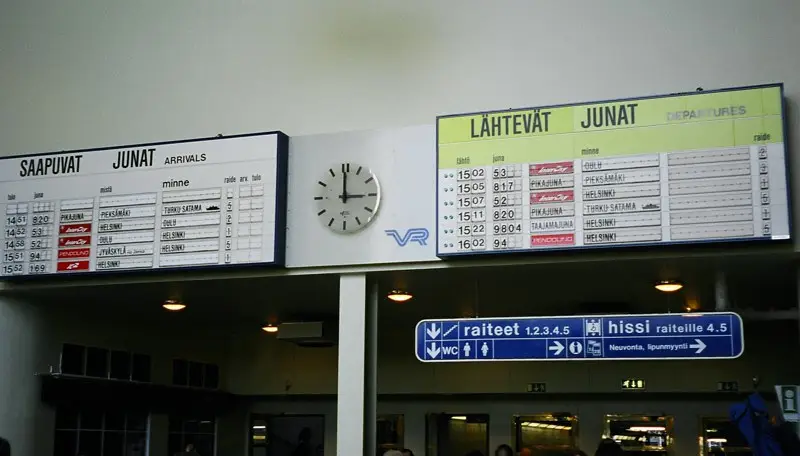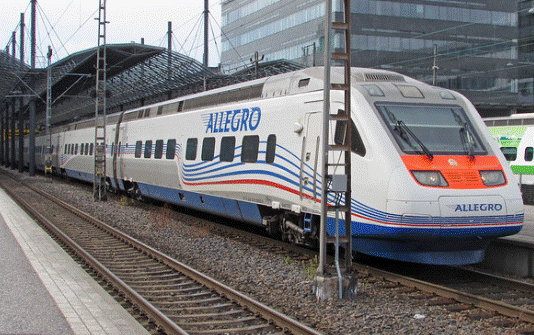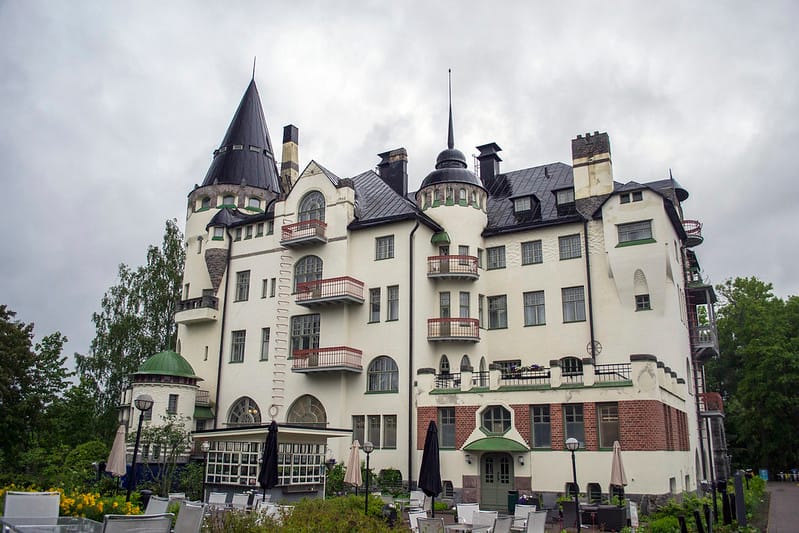Currently, the only way to travel between Helsinki and Tallinn is by ferry. Eight million of these trips are made each year, from popular booze cruises to the weekly commutes of tens of thousands of Estonians working in Helsinki.
Fortunately, this could all change. Peter Vesterbacka, CEO of FinEst Bay Area Development, and co-founder Kustaa Valtonen are behind a plan to build a railway tunnel across the Baltic Sea.
Why a Tunnel?
The Gulf of Finland separates Helsinki from Tallinn. The route is served by ferries that carry more than 7.5 million passengers per year, and passenger traffic is expected to grow rapidly—to 30 million trips by 2030. A tunnel could cut travel times to just 20 minutes.
A tunnel is also a much greener option, both for freight and passenger transport. It would create a major shortcut and shift cargo away from trucks and airplanes, which generate far more emissions than trains. In addition, the line is planned to be powered entirely by renewable energy.
Vesterbacka and Valtonen have founded FinEst Bay Area Development to promote the project, which they hope will be built in partnership with the governments of Finland and Estonia. The company has signed memorandums of understanding with both countries and is in the process of obtaining permits from the European Union. In addition, it has signed an agreement with Chinese railway manufacturer CREC for construction.
To fund the EUR15 billion project, Vesterbacka and Valtonen have partnered with UK-based Touchstone Capital Partners, which will contribute 30 percent equity and 70 percent loans. The company has also secured a commitment from a number of other private investors and investment funds. The company says it can finance the project using ticket revenues, and once it is operational, annual fees will cover operating and maintenance costs.
This is a risky project, and it will be years before the tunnel opens. Nevertheless, it makes sense to do everything possible to bring Helsinki and Tallinn closer together. The two cities have a long history and close connections, helped by the mutual intelligibility of the Finnish and Estonian languages. They are often regarded as twin capitals, and a new rail connection will turn them into a single metropolis.
A tunnel between Helsinki and Tallinn will also connect the Baltic states to the rest of Europe. The link will allow for a faster, more direct service with Berlin and Warsaw, as well as boosting freight and passenger traffic with the rest of the EU. The new connection will also provide an opportunity to join up with Rail Baltica, the 870km mixed-traffic 1435mm high-speed line that is being constructed through Latvia, Lithuania and Estonia to Poland’s border.
Benefits
The tunnel could bring many more benefits than simply reducing the two-hour ferry trip. The economic impact of such a link would be huge, transforming Helsinki and Tallinn into a unified working and living region. A fast connection could attract new investment, boost tourism and create more jobs for residents in both cities.
The Finnish transport ministers have already taken steps to make the idea a reality. In a statement, they agreed to work on a plan for harmonizing transit arrangements between the two cities. That includes developing a joint travel pass, better connections between the airport and the city center, park and ride schemes, and more.
It might not seem like much, but these changes could add up to a significant increase in passenger traffic between Helsinki and Tallinn. And it’s not just passengers, cargo and business travel would be boosted by a faster link as well.
Vesterbacka and Valtonen are not the only ones dreaming of a tunnel between Helsinki and Tallinn, but their project is unique for several reasons. Their company, RB Rail, is not just an investor but a developer that also plans to build the line. They have an innovative business model that combines private capital with public funding and they’re using big data to assess potential project returns.
The 103km tunnel between Helsinki Vantaa airport in the north and Tallinn Airport in the south will include an 80km undersea section. It will connect to the existing railways in the Baltic states but, more importantly, it will integrate with Rail Baltica, an 870km mixed-traffic 1435mm high-speed train line that’s being built through Estonia, Latvia and Lithuania towards Poland.
That line will significantly reduce freight costs and help grow trade with other European countries. But it will also transform the way we think about trains in this part of Europe. Most of the railways in this area have a Soviet-era 1,520mm gauge track, which makes it difficult to integrate them with Western Europe’s standard 1,435mm gauge network.
Once the tunnel is built, trains will be able to travel up to 200km per hour between Helsinki and Tallinn, meaning that a journey between the two capitals would take 30 minutes. That’s just like travelling from one city district to another on foot, which would open up new possibilities for both cities to grow into a unified metropolis of 1.5 million people.
Challenges
The FinEst Link project has been under development for over a decade. During that time there has been a flurry of activities with pre-feasibility studies published, financing secured and clear proposals for contracting works to begin. This is a massive undertaking and not without risk. The project has the potential to set a new standard for railway projects in Europe and beyond, but there is still a lot of work ahead of it.
The tunnel itself will have a length of about 103km, including 80km of undersea section. It will connect Helsinki Vantaa airport in the north with Tallinn Airport in the south, and also provide a connection with Rail Baltica, an 870km mixed-traffic 1435mm high-speed line under construction through Estonia, Latvia, and Lithuania to the Polish border.
It will not only speed up passenger travel between Helsinki and Tallinn, but it will create a new economic corridor between the three Baltic states and the rest of Europe. This will be achieved through high-speed passenger trains combined with multimodal freight logistics and by moving Baltic railways away from the Russian standard gauge to align with Western Europe’s.
This will also bring new opportunities for business and investment to the region. It is estimated that the number of passengers travelling between Helsinki and Tallinn will increase to 23 million by 2050, while cargo transport will rise to 8.4 million tons.
Currently, people traveling between Helsinki and Tallinn take either a two-hour ferry ride or a four-hour flight. But once the railway tunnel opens, a journey from one city to the other will be as quick as a short drive from one town district to another. This will allow Helsinki and Tallinn to develop into a unified working and living area and open up completely new possibilities for people, companies, investments, and growth.
For example, the Minister of Economic Affairs and Infrastructure Taavi Aas compares a train trip from Tallinn to Helsinki to driving from Keila to Ulemiste City in his own home country, Estonia. In both cases, the commute will be just about 30 minutes long. This is a huge improvement over the current situation, where travel between the two cities takes nearly two hours.
FinEst Link project
A feasibility study of the Helsinki-Tallinn tunnel, officially presented in February, has shown that the project is technically feasible and can offer significant benefits to both cities. In addition to reducing travel time between the two capitals, the tunnel would also increase cargo transportation capacity and speed up delivery times.
The project is led by Helsinki-Uusimaa Regional Council and Finnish transport agency Liikennevirasto in close cooperation with Tallinn city government, the City of Helsinki, the Estonian Ministry of Economic Affairs and Harju County Council. The work has been financed by the EU under the Interreg VA Central Baltic programme.
A number of other partners have also contributed to the study, including a consultancy firm that has worked on similar projects worldwide and the Finnish Railways research unit. The tunnel would be built using the European standard gauge of 1435 mm. However, at the end of the line near Tallinn, the tracks would switch to the Tallinn-Muuga terminal’s Estonian standard gauge of 1524 mm. This would allow the connection to be used by trains from both countries.
While the idea of a tunnel between Helsinki and Tallinn is gaining momentum, it has not yet been formally approved by either government. The private company behind the plans, FinEst Bay Area Development, is a joint venture of Finnish and Estonian entrepreneurs with a large investment partner from China, Touchstone Capital Partners. The company’s largest investor is committed to investing a total of 15 billion euros, of which 30 percent are equity and 70 percent loans. The control and majority ownership of the project will remain in Finnish and Estonian hands, as required by both governments.
The company will submit a detailed business plan and construction tender in 2022, with the first tunnel section planned to open in 2024. During peak hours, passenger trains will run every 20 minutes, with a travel time of just over two hours. A single ticket will cost 50 euros, while a monthly pass costs 2500 euros. Car shuttle and freight trains will run several times a day as well.
In the long term, the Helsinki-Tallinn tunnel could help fashion the two cities into a single metropolis. Kaspar Kork, the director of the Estonian Investment Agency, sees a great opportunity for investors in the project.


